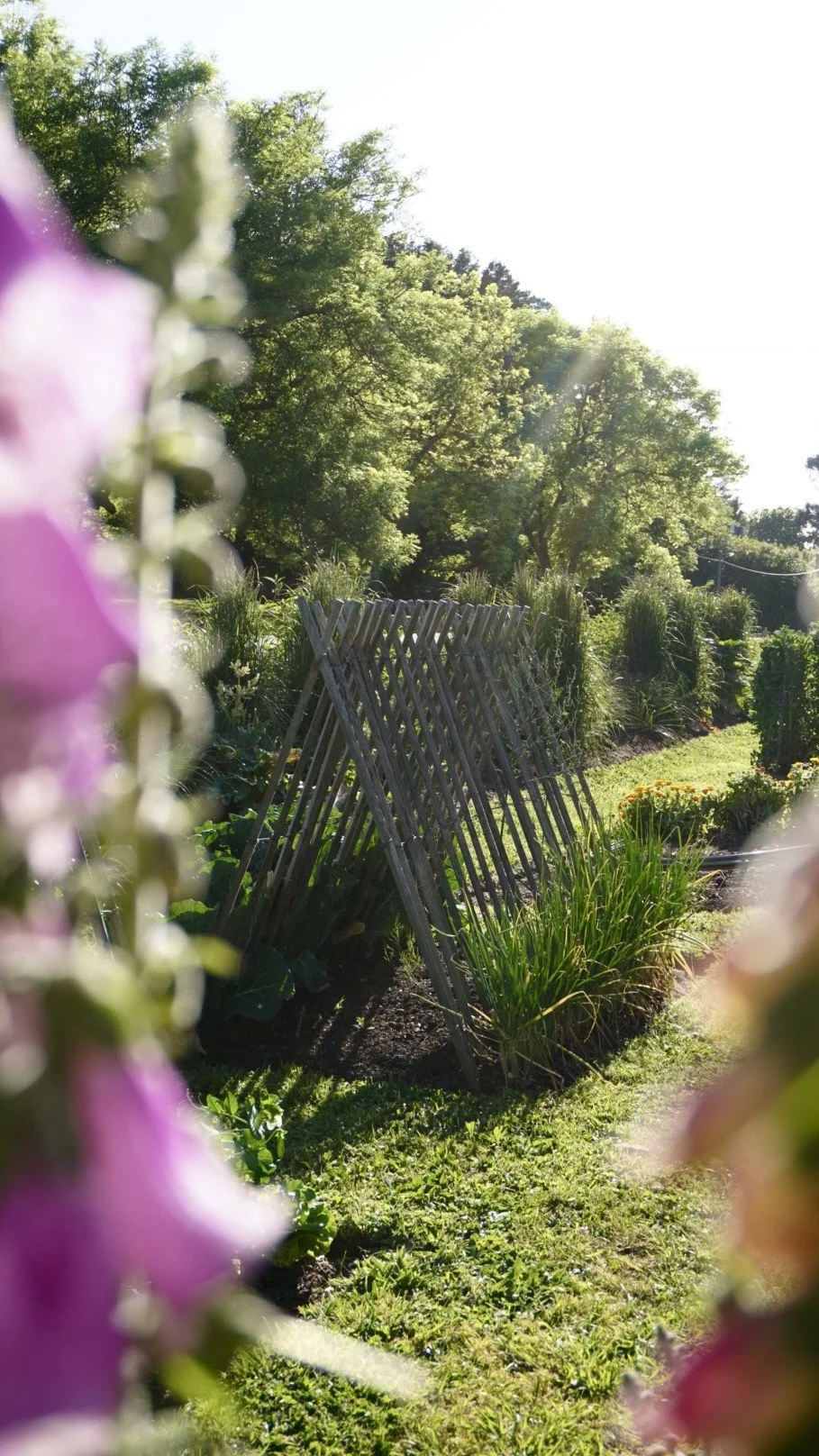The word productive is used often in gardening—and just as often misunderstood. In a world that ties productivity to industry, output, or how much we can do or grow in a day, I’ve come to define it quite differently. For me, a productive garden is not about squeezing more in or working harder. It’s about planting that is considered and seasonally responsive. About choosing to cultivate things that nourish life—mine, and the life around me.
Yes, there are the obvious harvests—fruits and vegetables, of course. But for me, a truly productive garden also offers herbs and flowers, medicinal plants and edimentals, aromatics that scent the air and calm the nervous system. It gives me ingredients to cook with, preserve, and share. Plants to distil, to dry, to make into teas, tinctures, or salves. Flowers that feed pollinators and brighten the kitchen table. Even fungi, self-seeded volunteers, or the tiniest harvest of lichen or moss in a shaded pocket—these are all part of it.
One of the things on my bucket list when I created the garden at Oak & Monkey Puzzle was to be able to grow armfuls of fragrant, old-world roses—just huge, beautifully scented blooms you’d never find in a florist. The kind you can only grow yourself. I still remember the first time I filled a fat vase with them. That moment—that experience of abundance, of purpose, of beauty you’ve grown with your own hands—that’s exactly what a productive garden means to me.
Productivity happens here too—in the quiet, layered architecture of a compost bay, where scraps become soil. It’s in the seed-saving, the slow rotation of beds, the gentle work of fungi under the surface. It’s not just about the garden’s offerings—it’s about the systems and relationships that sustain them.
When I speak of a productive garden, I’m speaking about a place that celebrates beauty as much as abundance. A space that gives something back, season after season. One that holds stories, rituals, and rhythms of tending and refining.
It doesn’t need to be big. My current garden is just 515m²—and it’s more productive than my five-acre property ever was. It’s not about scale—it’s about responding to constraint. The smaller space asks more of the design, and it rewards it. Because the constraints are tighter and the thinking has to be sharper, the garden becomes more intentional in response. Every square metre has a purpose, and most plants are multifunctional—chosen for their ability to offer both structure and scent, food and beauty, shade and shelter. It’s a garden that works with me, and for me.
Productivity, to me, is the art of creating something generous. It’s not about striving. It’s not about metrics. It’s not even about output. It’s about living in rhythm with the land—and letting that rhythm shape what the garden becomes.
You may want to check out my related content below:
From Forest Clearing to Town Garden: A Story of Growth – Discover the journey of transforming a space from raw nature to a thriving garden, filled with lessons and inspiration.
Landscape Lingo: The Chelsea Chop and Ways to Have Plants Look Their Best – Learn about the Chelsea Chop technique and other gardening tips to help your plants reach their full potential.
Your Ultimate Gardening Inspiration Resource – Curated by our community for our community, this resource is filled with inspiration and practical tips for your gardening journey.
Creativity, Connection, and Beauty at Babbington Park with Lean Timms– Inspired, grateful, and reminded that making time for creativity and connection isn’t always a luxury—sometimes it’s a necessity.
Want more like this?
If you’re drawn to this way of gardening—where design, purpose, and deep seasonal connection guide what and how we grow—I share more in my upcoming book, due for release in 2026 with Murdoch Books, as well as through my workshops, e-books, and seasonal newsletter.
→ Share this blog with your friends and gardening allies to spread the love and knowledge.
→ Sign up for the newsletter to stay up-to-date on upcoming workshops, garden tips, and exclusive updates from Little Cottage on a Hill.
As always, thanks so much for following along.
Natasha xx
For glimpses into workshops, daily life, and my thoughts from Little Cottage on a Hill, you can find me on Instagram, Facebook, LinkedIn, and YouTube. And if you’d like a more personal update, subscribe to my Newsletter for a monthly note on what’s growing, what’s inspiring me, and what’s next.
Click the links below to stay connected—I’d love to have you along for the journey.














